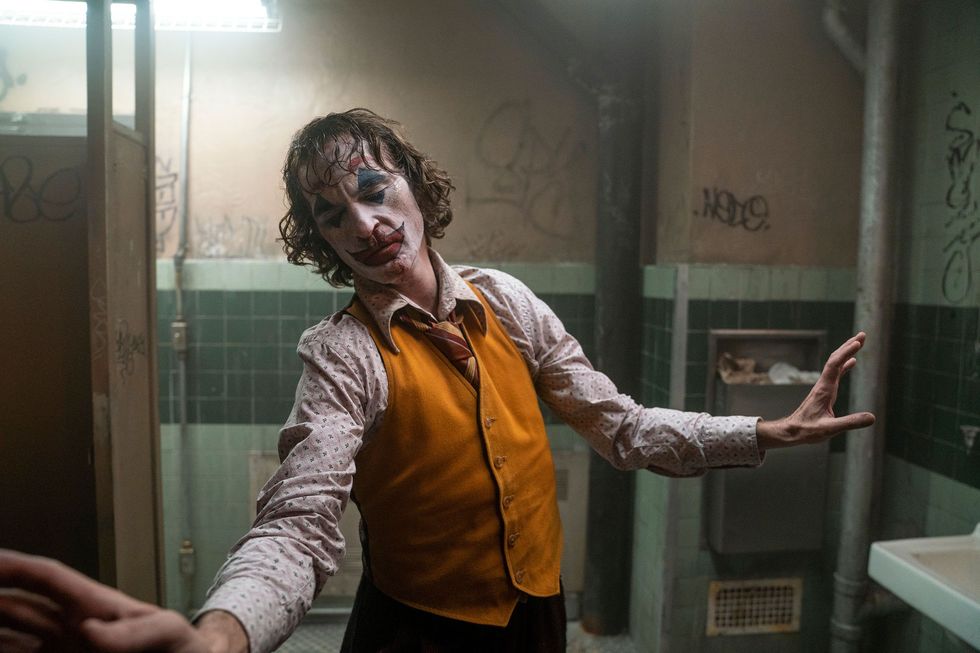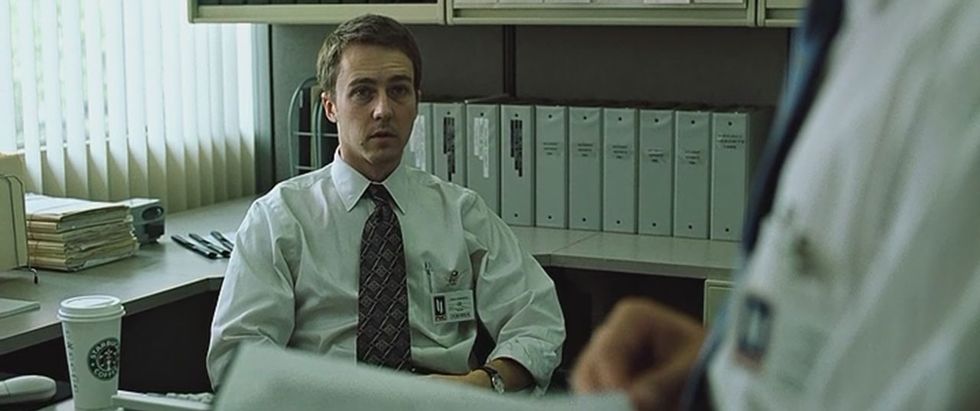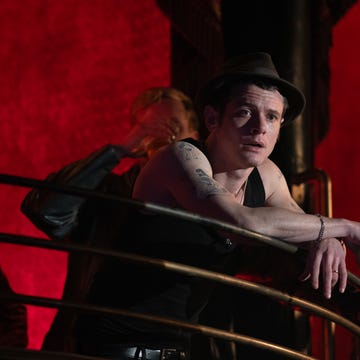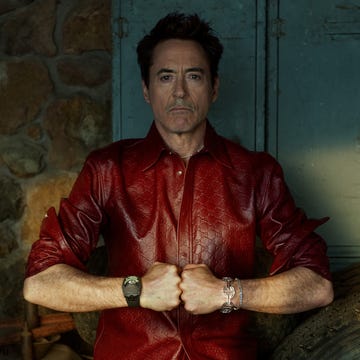After Chuck Palahniuk released his best-selling novel Fight Club, he noticed that each reading he did attracted one or two young men who would ask him where they could find a real-life fight club. "I always felt bad telling them that they didn't actually exist," he told The Guardian in 2005. "But the fact they were looking for them somehow attested to the power of the fiction."
Of course, it isn't about finding somewhere men can hit each other in the face. A martial arts group or mouthing off at someone in your local Wetherspoons can give you that easily enough. No, the allure of Fight Club was that it was an underground resistance: a group of men who thought they had unearthed some deeper truth about society and wanted to withdraw from it in protest.
That men were actively seeking this kind of escape route was perhaps a sign of the legacy the story would come to have, and yet, despite its popularity now, David Fincher's film adaptation suffered poor reviews and a mediocre box office performance when released.
Edward Norton and Brad Pitt as the insomniac narrator and elusive soap salesman Tyler Durden eventually found success with its DVD release and word-of-mouth recommendations. The public consensus shifted, critics revised their opinions, and on the ten year anniversary of the film the New York Times called it, "the defining cult movie of our time."
Next week marks the next big milestone as the film turns 20, and its birthday comes at the height of the debate around Todd Phillips' Joker. Released last week with much fanfare and a record-breaking opening, the gritty origin story about Batman's nemesis is less a character study and more a series of hauntingly hyperrealistic vignettes of an unhinged killer.
It has been termed the "Fight Club of our time" by The Telegraph, and earned numerous other comparisons to Fincher's film by critics. At first glance the movies share some common DNA: exploring violence as a means for lost and angry men to find their people, and, intentionally or not, positing the idea that the mayhem resulting from men feeling isolated and lonely is blood on the hands of society.
Both have faced the question of whether they are critiquing toxic masculinity or covertly egging it on, skewering violence or glorifying it.
But the way in which Fight Club succeeds where Joker does not is in its ability to step outside its leading angry male in the form of brawny hell-raiser Tyler Durden, using him to reveal the fantasies hidden in men's minds.
In Joker we see the girlfriend that Arthur Fleck imagines for himself, but she's a flimsy, poorly-drawn reflection of his desires, showing the audience only that he's lonely and sad rather than revealing anything interesting about him.
Fight Club and Joker are products of their own time. The narrator of the former lives during a time of financial boom and mass-consumerism in which he can't spend his salary fast enough. Meanwhile Arthur Fleck's life of meagre health benefits, dead-end job prospects, and cohabitation with his mother is set in the early '80s, but feels all too familiar in 2019.
The same sense of dread towards society that pervades Fight Club is bleakly threaded through Joker, but Phillips' creation seems to luxuriate in the bleakness and chaos rather than burn it to the ground. For Palahniuk, fight clubs are a way of confronting your demons in a world that feels numb, in Joker, the violent uprising is the all-singing, all-dancing crescendo.
At 20, the legacy of Fight Club is more complicated than ever, with the film now often described as a "Bible for incels" due to how men's rights activists have taken to quoting it on online forums. Its adoption by the alt-right has seen the line, "you’re not a beautiful and unique snowflake" become their de-facto insult, "snowflake", and Pitt's character was used on the website for a "straight pride parade", an event with heavy links to the alt-right.
Despite how it has been warped and misread, toxic masculinity was always the target of Fight Club, not the hero of the story. Fincher has said that “women maybe get the humour faster,” as they are more likely to recognise the violence and macho behaviour as male posturing.
The targeting is subtle, so much so that handsome, athletic Brad Pitt can be misread as the face of a society-rejecting, red-pill taking, face-punching alpha male by those who 'saw the light' after watching Fight Club. But if Tyler Durden is the poster boy that the alt-right had on their walls, then Todd Philips' Joker is the product of embracing nihilism as a religion and Durden as a hero.
Joker is so blindly adoring of its lead character, and of Joaquin Phoenix's impressive performance, that it forgets to take a step back and bring the audience out of the illusion he is under. It is cowardly in its reluctance to stray from his warped perspective, crowning him king of the outcasts as they crowd around him on a smashed up car.
In the closing scene of Fight Club the narrator watches as buildings collapse in front of him. Having shot himself (and Tyler) in the head, he closes the book on a "very strange time" in his life. It's the sort of powerful scene which Phillips is aching for when he has the Joker shimmy away in the last minutes of his film, and yet there's nothing to feel but emptiness in watching his victory dance.
Like this article? Sign up to our newsletter to get more delivered straight to your inbox.
















